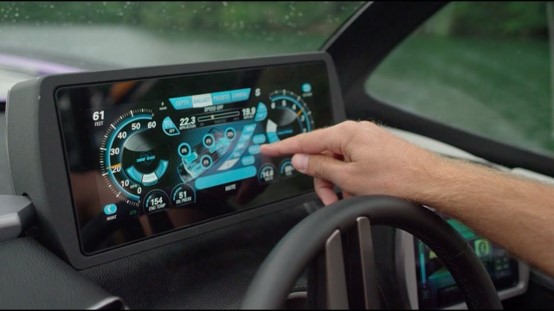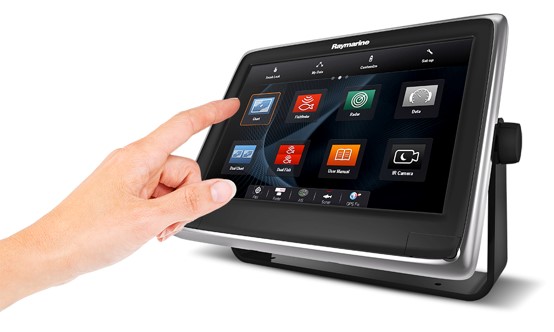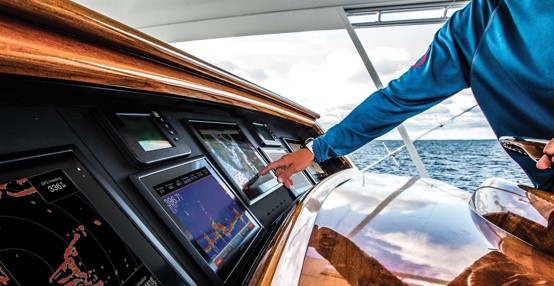Touchscreens: Here to Stay?
By Dag Pike
The last few years have seen a proliferation of touchscreens. They are everywhere, on our phones and tablets and now, a few steps behind, we find them taking over our navigation displays. Touchscreens look so quick, easy and logical to use and they save having to have all the push buttons and knobs that were a feature of the past. We have to accept that touchscreens are the future but for our navigation displays are they the best solution?
For phones and tablets they are a good solution because as everything gets smaller there is not much room for knobs and push buttons but one place you do not see much in the way of touch screen control is on desk top computers. OK, does anyone use desktops anymore and perhaps the reason why is because touchscreens on a fixed vertical display is not a very user-friendly system. Those fixed navigation displays that we have on our dashboards are very similar to a desktop display and yet we are seeing touch screens arrive there. Again, I ask, are they the best solution?
These robust touchscreens are designed for the open cockpits of sailboats and they work in conditions that you are never likely to experience under power where helm stations tend to be more protected although you may find more exposed displays on the flybridge.
My real gripe about using touchscreens on boats is that while the display is attached to the boat, the finger that you are using to operate the display is not. I find it very hard to make my finger hit the precise spot on the display that I want when the boat is moving about and my finger will not touch the display at that precise spot that I want, whether this is to operate one of the control icons or perhaps to add a new waypoint.
It all looks fine when you use the display in the showroom or at the boat show when everything is static and the benefits of using a touch screen with its quick response become very apparent but fit that display into a powerboat that will be moving about quite rapidly in waves and you can find it almost impossible to hit the right spot. Your finger seems to have a mind of its own. Under those circumstances, I much prefer the rotary knob of old that you could actually grip when you wanted to set something on the screen.
The other problem that I find with touchscreens is when you are trying to set a route with a series of waypoints that you want to follow when you get out to sea. You are doing this in the still waters of harbor so there is no problem with getting your finger to touch the right part of the display. The problem comes because your finger is a pretty blunt instrument and it can be quite difficult to locate the precise spot on the display where you want to place the waypoint. I find myself having to have at least two or three stabs at the display before I get the position of the waypoint somewhere near where I want it to be. It can be even more of a challenge when you are using one of the small displays that you find in many sports boats.
To me, it seems unnatural to be using a finger to touch the right spot on a vertical or near vertical screen. It's fine when it's near horizontal as is the case most of the time when using a tablet but out at sea we like our displays to be nearly vertical in order to avoid reflections and have the display in our line of sight which means that you are pointing your finger at the display with no means of supporting your hand to steady it. With modern touchscreens you also use your hand to expand or decrease the range or to move to another part of the display as you do with your tablet and when your hand is not steady that can lead to you not getting the response that you wanted.
However, touchscreens are here to stay as far as I can see so what can we do to make control easier and more precise? We used to have much the same problem with the older type of radar or chart displays where push buttons were used for many of the control operations. Trying to hit the right push button was just a much of a challenge and the solution there was to fit a rest bar close alongside the push buttons. In some cases, this rest bar would also be a handhold so that you could grip it firmly and still be able to use your finger to find the right push button.
If we do the same thing with a touchscreen, it would at least give your hand some measure of stability when trying to operate the screen. The only solution that I can offer is to make sure that you set everything up before you leave the harbor and then hopefully you will not have to touch the screen when you are out on passage but even things like changing the range of the display can be a challenge.
We are seeing this type of problem more and more with both instruments and controls on boats. Most seem to be designed to work fine when the boat is static but once you get a boat moving in waves out at sea just trying to operate the controls and get the subtle response that you want, whether it is the throttles or the touch screens, can become a challenge that manufacturers will need to address. Of course, the other solution is only to go to sea in calm conditions.





